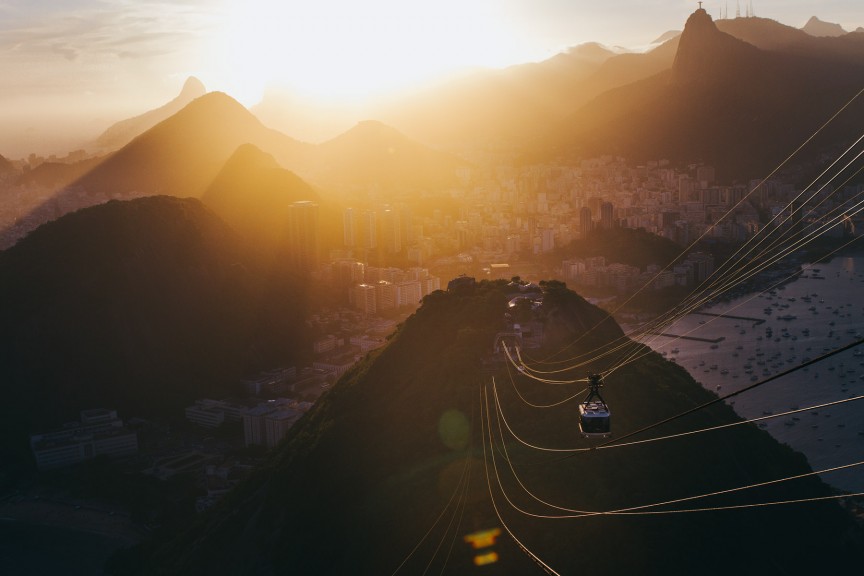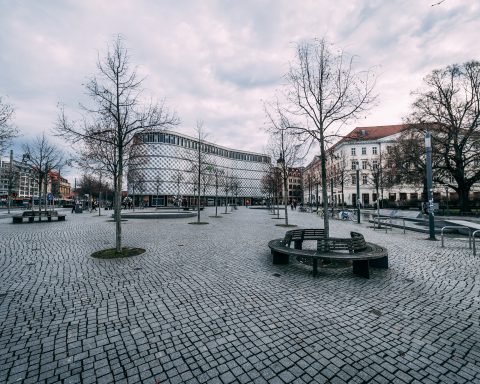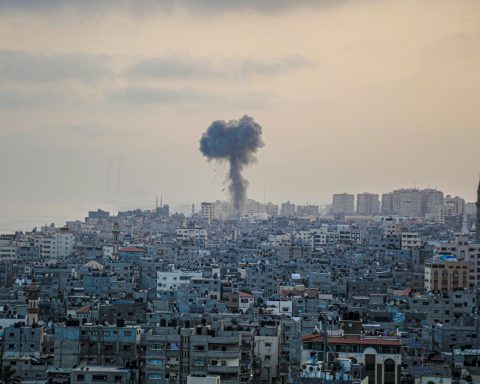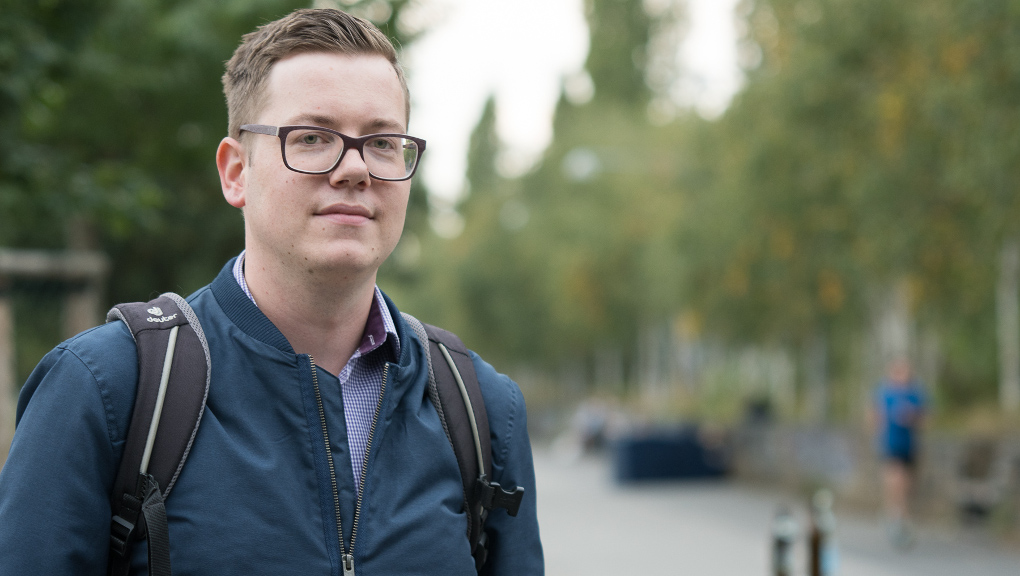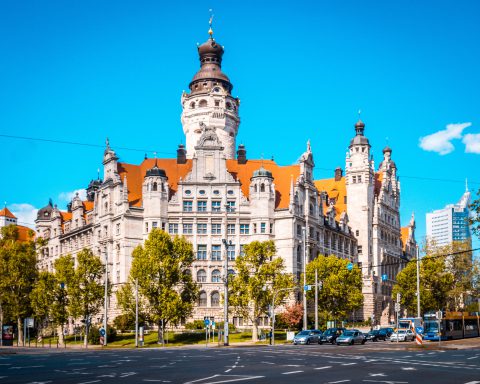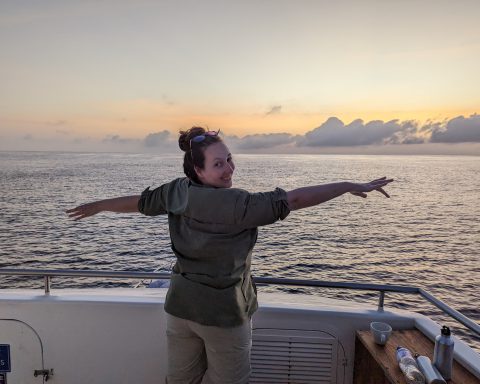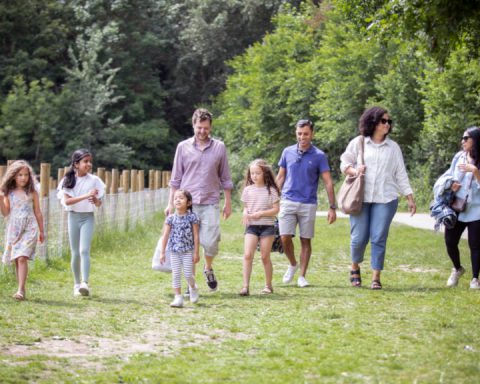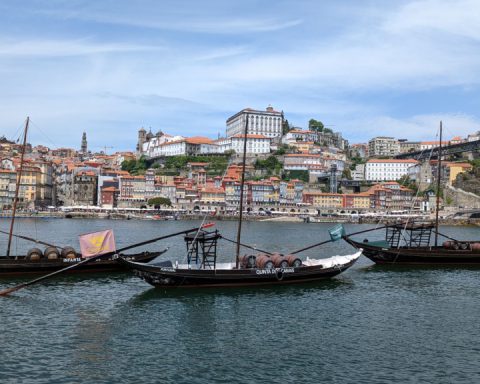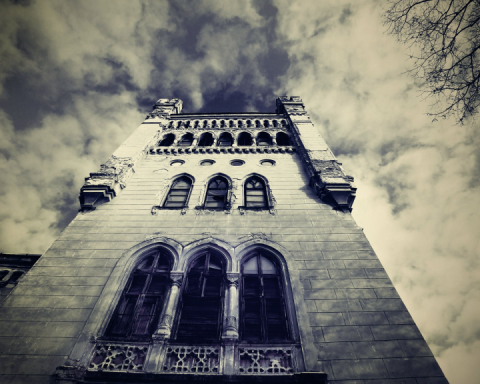I first met photography and travel enthusiast Kay Fochtmann at Leipzig University, during one of many Portuguese classes. He has managed to turn his passion into a profession, working locally as a wedding photographer and traveling the world whenever he can, only to take more photos.
A Leipziger by birth, Kay has formed a special connection with Brazil amid his travels – both professional and personal. He is currently showing selected photos of his journeys to Rio de Janeiro and São Paulo at the Leipzig branch of the Volkshochschule (VHS). Also, he recently married his long-time Brazilian girlfriend, Tamires.
Kay, now 36, spent some months living in Rio’s Favela da Rocinha in 2011, besides other periods in Brazil. The fact that he stayed in Rocinha – Brazil’s largest favela – longer than the average tourist and was accepted in the community allowed him to reach beyond the cliché depictions of life there.
I recently caught up with Kay to ask how he got his marvelous shots and why he keeps returning to the buzzing streets of the two Brazilian metropolises.
—
Q: Hello Kay, great photos! It’s about time to see at least some of them on public display, don’t you think? Normally you work as a wedding photographer; how did you get to cooperate with the Volkshochschule Leipzig?
A: Thank you! A friend of mine who is fond of my pictures works in the VHS and told me that they regularly exhibit local artists and that I should try to apply. He introduced me to the VHS marketing director Mrs. Hensel. She is a very nice lady and happened to like my pictures; and more importantly, there hadn’t been an exhibition about Brazil yet. Everything was very easy-going and we set a date for the opening. That’s it.
Q: Some of your photos were taken back in 2011, some were taken more recently. Your relationship with Brazil, especially Rio de Janeiro and São Paulo, dates back some time. Looking back, can you identify a starting point of your passion?
A: It all started with documentaries about the Amazon Rainforest that I was watching as a kid and that I got kind of addicted to. I fantasized about going there so many times, but it was [not] until 2002 that I finally got my chance.
My cousin was doing an internship in São Paulo and invited me over for a two-month road trip across the country. I fell in love with the nature, landscape, culture, people, all the contrasts it had to offer. I knew right then and there I would want to live there one day, even if just for a few months.
It took me nine years until I was ready for this next step; this time I came for an internship myself. I stayed six months and made great friends. Since then I came back to visit them almost every year, if my wallet allowed…
Q: I remember visiting you in the Rocinha favela in the southeast of Rio back in 2011. You were not just visiting the favela like many tourists do nowadays, but you lived there. How did that happen and what did you do in Rocinha?
A: I remember that visit very well – your Brazilian friend from São Paulo didn’t really feel comfortable at all being there, since she had never been in a favela before.
For me, it all started with that internship in Rocinha: I was studying geography and wanted to write my dissertation about favela tourism. The tour guide I was in touch with kindly invited me to stay at his place inside the favela. That was not my plan at all and I was hesitating and needed a few nights to think about it.
Eventually I agreed to it. I was worried, since many Brazilians warned me to not do it.
In the end, I stayed for three months and it was the most exciting time of my life.
Besides soaking it all in… the life, the laughter, the music, the scent, the language, the good and the bad, I helped the tour guide pick up the tourists at their hotels, made sure that everyone was following the unwritten favela community rules, and watched out that the tourists only took pictures where they were allowed to do so.
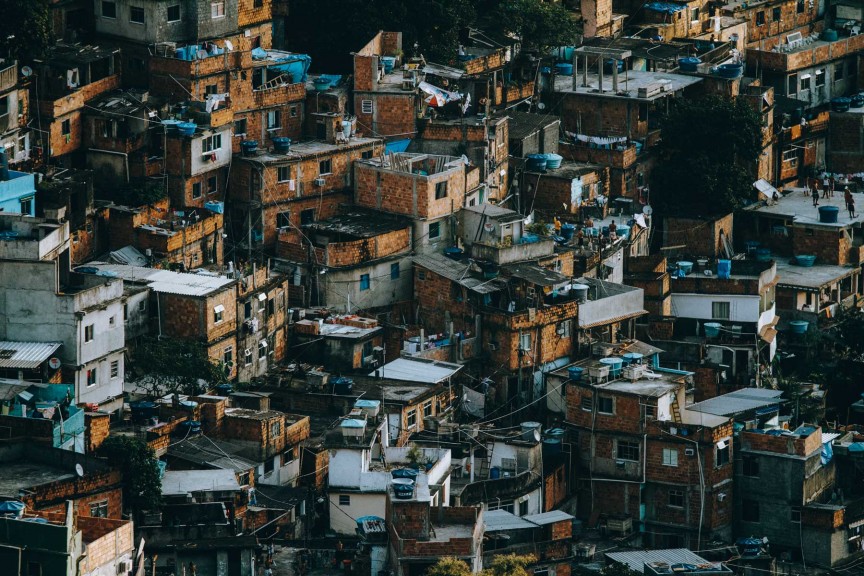
Q: That’s right, and at the end of our trip up and down the hills of Rocinha, I think even my friend had to rethink her image of the favelas. They’re often portrayed as nothing but a place of extreme poverty with high crime rates. Tourists only recently started to discover the more colorful and diverse aspects of the winding alleys and twisty paths, the thousands of self-built tiny houses and most importantly, the inhabitants.
Your photos show the large span in between these two extremes. How were you able to take these photos, and were you ever worried about your personal safety?
A: What we hear and read is not about everyday life of the decent, hard-working people that keep the city of Rio up and running. We mostly hear about the extremes. And they do exist, of course.
The favelas were illegal settlements without any public supply and governance. This vacuum was filled by gangs who provided basic needs and who therefore found a save haven to sell drugs without interference from the local residents.
When I decided to live in Rocinha, I was aware that I might see a drug dealer with a gun every now and then, but I was not prepared to see teenagers carrying grenade belts and machine guns on a daily basis.
I was told where I could take pictures and where to better keep my camera down. I never had any problems – the dealers were doing their business, and if you don’t interfere or if there isn’t an invasion of a rival drug gang going on as it is happening these days, there won’t be any problem.
One time, though, I couldn’t keep myself from taking a picture in an area I shouldn’t have, and it didn’t go unnoticed. A friend approached me and told me that the dealers were watching me, that they questioned him about me. He vouched for me and there luckily were no consequences.
But those guys are serious: Two years ago, a German guy was shot because he “accidentally,” as he said afterwards, took a picture of a dealer in Rocinha. So I basically stuck to photographing the people I already knew.
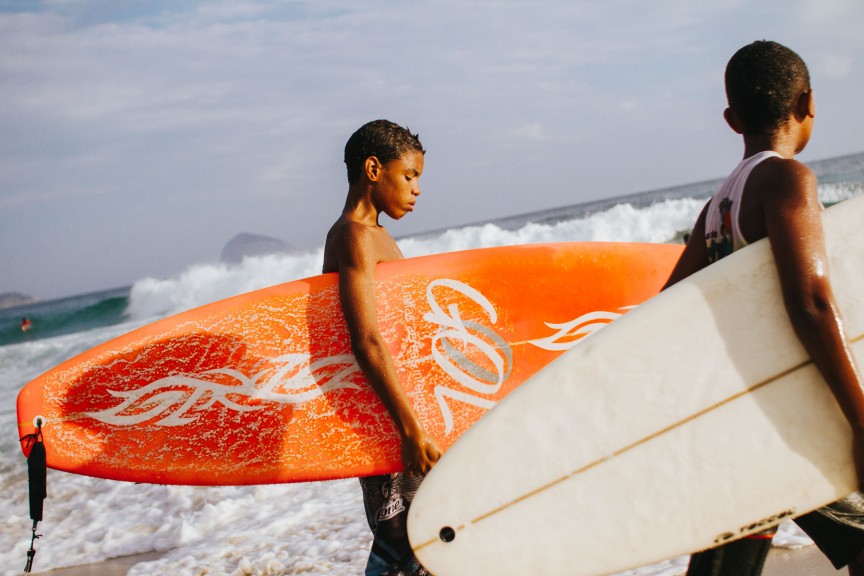
Q: In your photos we for example see kids from the favelas standing at the shore of the Atlantic Ocean, waiting for the sea spray to touch them, looking like they are meditating before they confide their lives to a surf board. Are these lucky snapshots or did you have to win your models’ confidence first?
A: These photos are all snapshots, but I did spend some time with the surfers before. They were from a friend’s surf school, where I passed by almost every day. So they “knew” the gringo with the camera and they let me do my thing.
I am trying to be as inconspicuous as I possibly can whenever I am taking photos. For me, it’s the most natural thing to have a camera in front of my eyes, and I think this vibe is being transported to the subjects I photograph. Kind of like “this guy means no harm.”
Q: Does that mean that you are not the tall, white European gringo standing at the beach with an oversized telephoto lens attached to an enormous camera? Did it take many shots to find these seemingly perfect ones?
A: At least I try not to be that kind of gringo – I’m not sure if I always succeeded!
I mostly use a very small point-and-shoot camera which helps a great deal for my kind of photography. Nobody takes me seriously with this little black box and it fits in every pocket.
Photography is about seeing and framing the picture before you actually take it, but it does indeed take many shots to find the perfect one. These photos are not staged and often they show people in motion.
From my experience as a wedding photographer, I learned very early on that one or two more shots can make a difference, especially when photographing a group of people – there is always someone with their eyes half-closed, mouth open, etc.
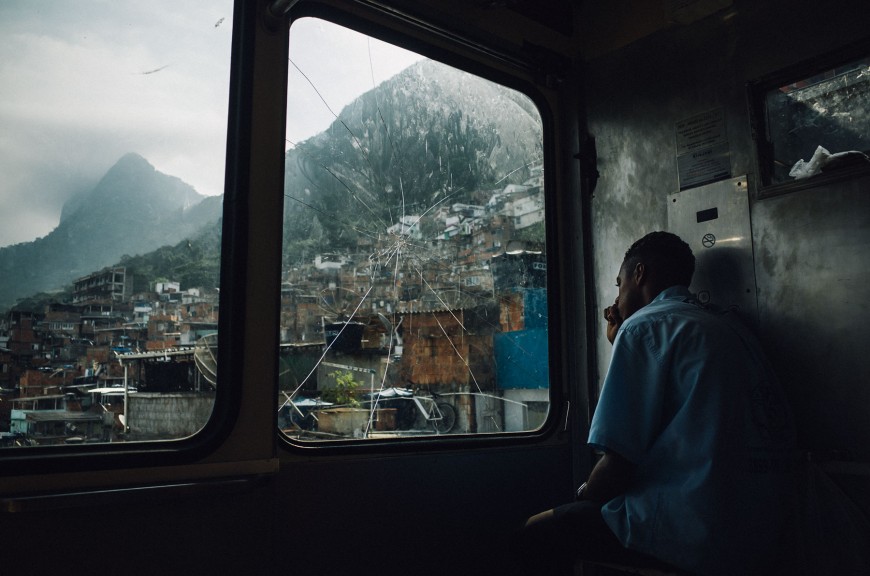
Q: You’ve already sold some of your photos to news agencies and media platforms. One of your bestsellers shows a staggering view on Rio from the famous Pão de Açucar, the Sugar Loaf. It was, amongst others, used in the Lufthansa flight magazine. It’s taken against the sunlight, illuminating the steel cables of the Teleférico, the cablecar to the Sugar Loaf.
Do you think that the success of your most popular shots is due to the extra amount of patience you have to get a special photo?
A: I don’t think I am overly patient when it comes to photography, but I am definitely enthusiastic about it and this is what matters. I am not the kind of photographer who would get up at 4 in the morning to get the best photo (even though I have indeed done that already and it was worth it).
I am the kind who would walk around the city day after day from morning to evening with the camera in my hand, shooting whatever catches my interest. I don’t get bored.
One day in Rio, though, I was out without my camera and saw a scene that I loved: a group of boys playing with a huge wave crashing onto the quay wall. I was thirty minutes away from my apartment in the favela, it was 40°C and I was exhausted because I had gone for a run earlier.
But I saw that scene and had to get back to grab my camera to run back to where the boys were and to take the picture. It took me one hour in total to get back to the scene, and I think this kind of enthusiasm plays a role in the success of a picture.
Q: Amazing, Kay! Will we see more photos from Brazil in the future or will you focus more on your wedding photography business?
A: I am afraid you will always see pictures from Brazil from me – this country is my muse. But I hope the photographic focus is going to shift more from everyday scenes towards some sort of a long-term documentary project.
Of course, my wedding work will continue since I really enjoy doing that and of course it pays my bills and journeys…
—
Kay Fochtmann’s photos can be seen weekdays from 8 a.m. to 8 p.m. on the ground floor of the VHS, Löhrstraße 3-7, Leipzig. Don’t miss the photos around the corner after the staircase! The exhibition is open until 31 October; click here for more info (in German).
—
For more inspiration and information, see Kay’s website or find him on Facebook and Instagram.
—
By Lisa C. Renner
Lisa was born in Leipzig in 1990 and recently graduated with a Master’s in conference interpreting from Leipzig University. She is a board member of the Leipzig Houston Sister City Association.

